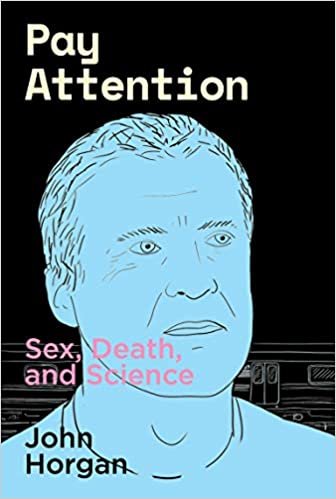John Horgan is a science journalist who has knocked many scientists over the course of his career and yet stubbornly thinks of himself as a nice guy. For a critical albeit weirdly selective take on Horgan’s work, check out his Wikipedia page, which harps on his 1993 article “The Death of Proof” and his attacks on racist pseudoscience.
Horgan was a full-time staff writer at Scientific American from 1986 to 1997, when the magazine fired him due to a dispute over his first book, The End of Science. Eight years later all was forgiven, sort of, and Horgan wrote a couple of freelance articles for Scientific American, notably “The Forgotten Era of Brain Chips.” From 2010-2022 he churned out hundreds of opinion pieces for the magazine’s online edition.
Horgan has also written for The New York Times, Wall Street Journal, National Geographic, Washington Post and other publications too obscure to mention (like Time and Newsweek). Since 2005, Horgan has received a steady paycheck from Stevens Institute of Technology for teaching and running a lecture series, which means he writes primarily for fun, not money.
Horgan’s The End of Science: Facing the Limits of Science in the Twilight of the Scientific Age, published in 1996, became a bestseller translated into 13 languages. Pundits still cite The End of Science (republished with a new preface in 2015) when fretting over science’s future, although they usually emphasize that they disagree with Horgan’s gloomy outlook.
Although none of Horgan’s subsequent books has matched the commercial success of The End of Science, he loves them all. They include, in chronological order, The Undiscovered Mind; Rational Mysticism; The End of War; Mind-Body Problems; Pay Attention, a lightly fictionalized memoir; and My Quantum Experiment, which like Mind-Body Problems is online and free.
Horgan has been interviewed by PBS, MSNBC, NPR, AP and BBC, among other major media. See for example his recent appearances on “Closer to Truth,” which “presents the world’s greatest thinkers exploring humanity’s deepest questions” (their words). He has lectured at Harvard, Yale, MIT, Caltech, Princeton, McGill and the London School of Economics, among other fancy institutions.
His ego has been further inflated by winning the Science Journalism Award of the American Association for the Advancement of Science (twice) and the National Association of Science Writers Science-in-Society Award. But those honors were long, long ago.
In 2023 Horgan, refusing to fade away with dignity, launched the online journal “Cross-Check”, which was the name of a blog he wrote for Scientific American from 2010-2020. For a full list of columns, click “About Cross-Check” above. Enter your email into “Subscribe” below if you want to be notified of new Cross-Check posts.
Horgan produces (sporadically) “Mind-Body Problems” for the online talk show Bloggingheads.tv. He tweets (sporadically) as @horganism. Phil Anderson, a physicist and Nobel laureate, coined the term “Horganism” to describe excessive pessimism about science. You can also find Horgan on Facebook and Bluesky.
After high school, Horgan spent years as an itinerant hippy before settling down. He got a B.A. in English from Columbia University's School of General Studies in 1982 and an M.S. from Columbia's School of Journalism in 1983. Yes, his critics are right, this “science writer” lacks scientific training. IEEE Spectrum, a journal for electrical engineers, gave Horgan his first writing job (1983-1986) even though he had no idea what an ohm is. He does now only because he just looked up “ohm” on Wikipedia.
If you discover problems with this website, or you just want to gripe, contact Horgan at horganism3@gmail.com. Oh, by the way, the photo at the top of this page shows Horgan after he fell on his face in September 2022. Here’s the backstory, plus a more revealing photo.
Books









